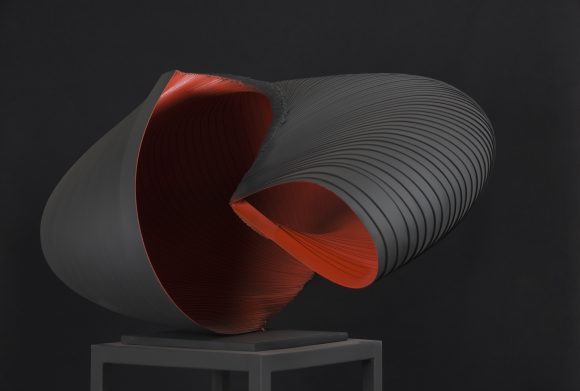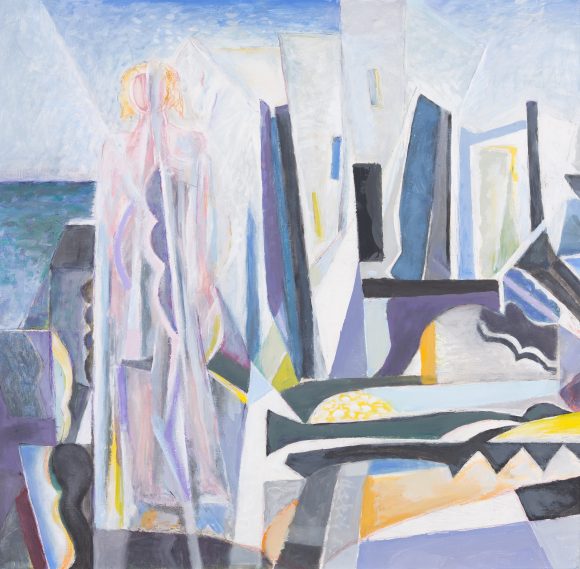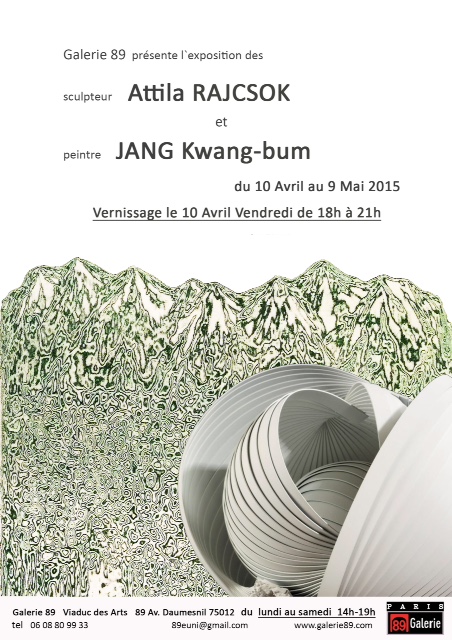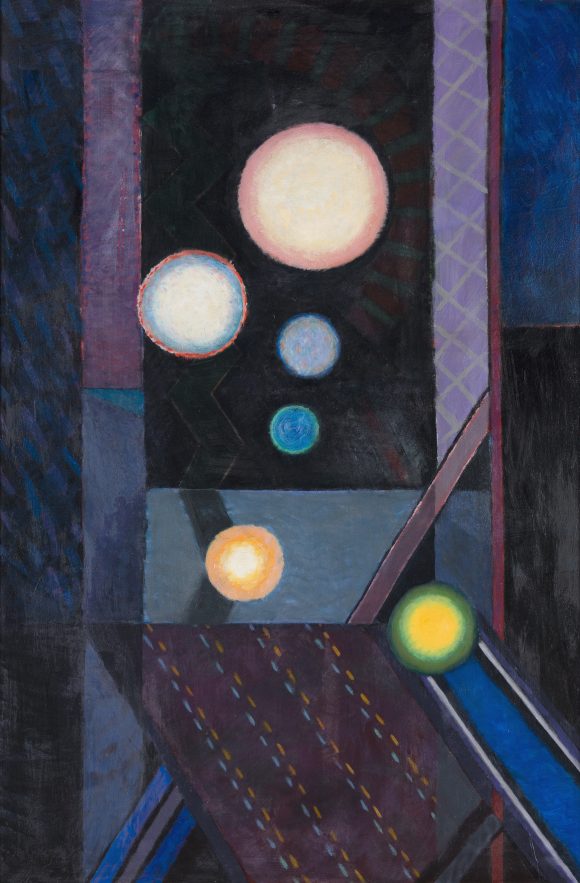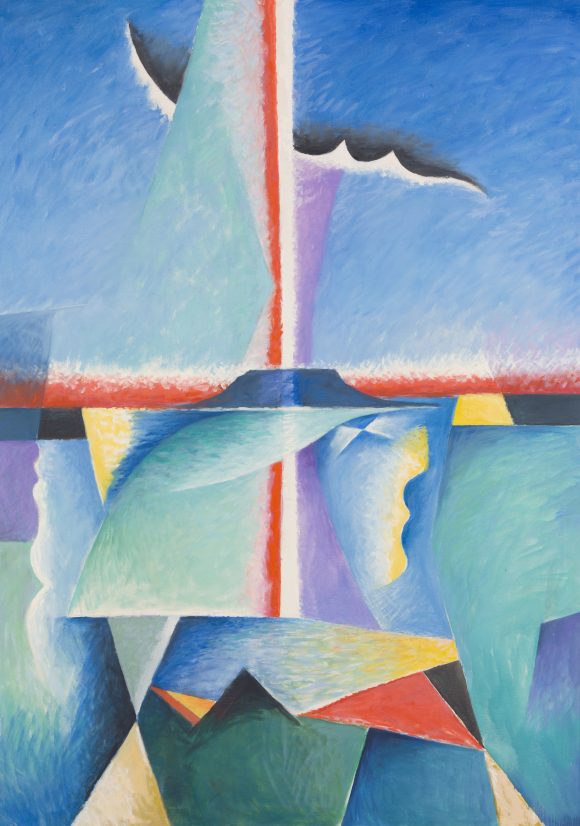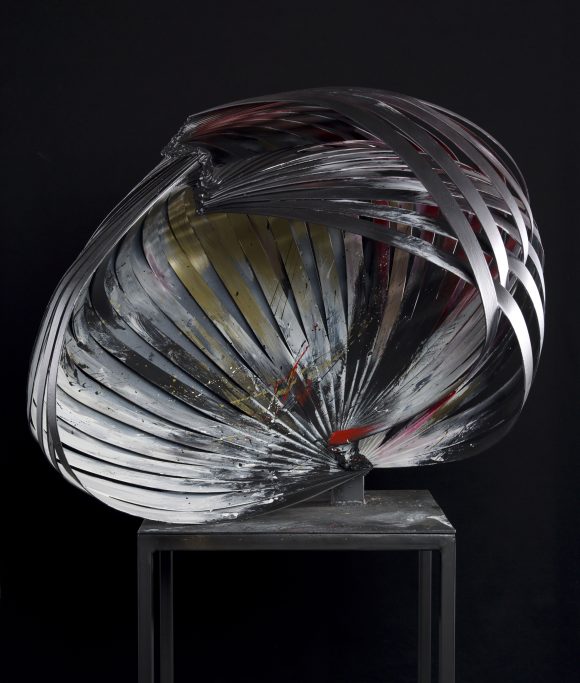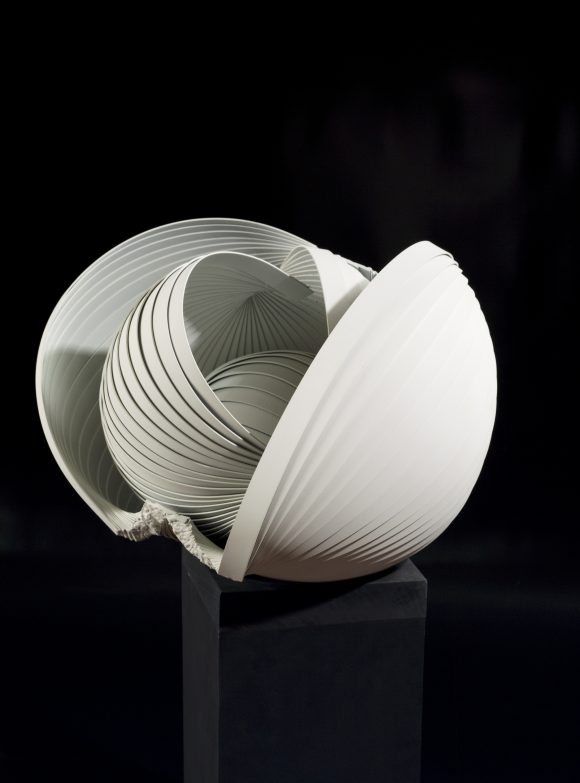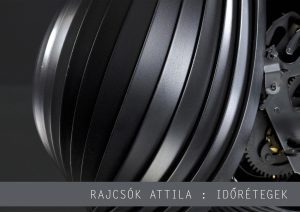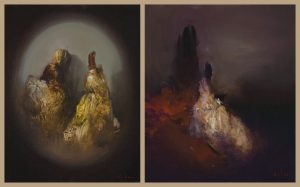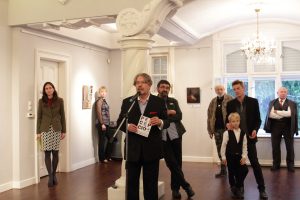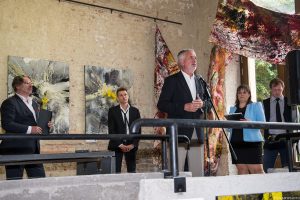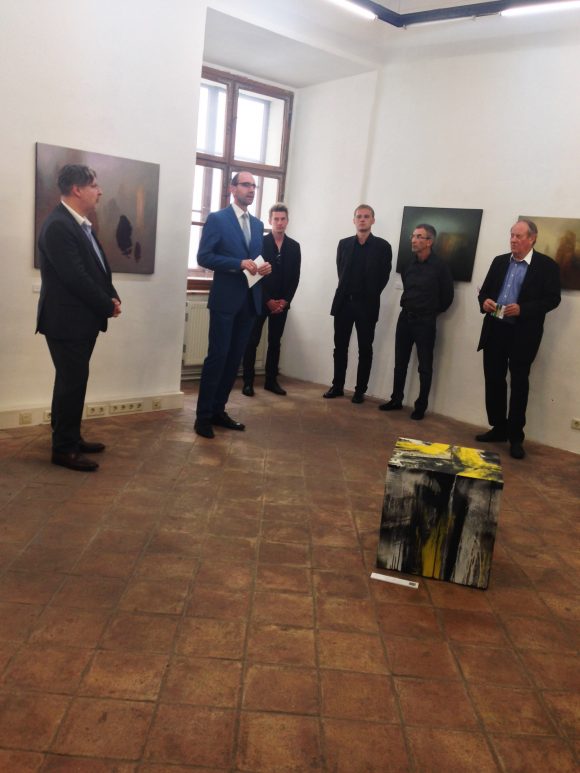In „Parallel Lights” series by Tamás Hencze bright colors are playing an important role. Rousing yellows and blues are getting unusually large space on the pictures. I’ve choosen „Parallel Lights XVII” to write about, which is operating instead of these colors with black, grey and white. „Parallel Lights XVII” is closen to itself, identical to itself, both as a picture and as philosophy. The grey and black bands of the frame-like formation wake the sense of symmetry, which is only thickend by the gestures leaning to eachother. Behind these colors are shining the white lights, tending on a regular path, then breaking in the space beyond the formation. They do not pass the borders of the painting, the fund and the end is the artwork itself. Tamás Hencze likes emptiness. Gives a form, a rythm for emptiness. He’s ordering it in the middle of „Paralell Lights XVII”. This bare whiteness has no space or body, though it fills u pour eyes. Looking at this painting by Hencze is like when we’re staring in the blindening Sun, and for a moment we can only see empty, white light, with vibrating colorful forms.
photo: Art.Salon : Társalgó Galéria (misi)
written by: Zsófi Máté
Parallel Lights XVII. (150x100cm, oil on canvas, 2014)


